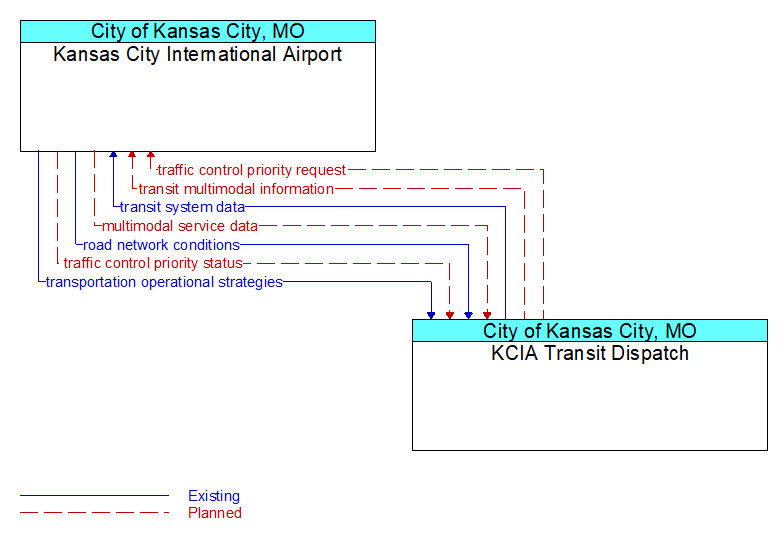Interface: Kansas City International Airport - KCIA Transit Dispatch

Architecture Flow Definitions
multimodal service data (Planned) Applicable ITS Standards
Detailed real-time schedule and other service information from alternate modes that supports coordination between modes to facilitate efficient transfer at connection points.
road network conditions (Existing) Applicable ITS Standards
Current and forecasted traffic information, road and weather conditions, and other road network status. Either raw data, processed data, or some combination of both may be provided by this flow. Information on diversions and alternate routes, closures, and special traffic restrictions (lane/shoulder use, weight restrictions, width restrictions, HOV requirements) in effect is included.
traffic control priority request (Planned) Applicable ITS Standards
Request for signal priority at one or more intersections along a particular route.
traffic control priority status (Planned) Applicable ITS Standards
Status of signal priority request functions at the roadside (e.g., enabled or disabled).
transit multimodal information (Planned) Applicable ITS Standards
Transit schedule information for coordination at modal interchange points.
transit system data (Existing) Applicable ITS Standards
Current transit system operations information indicating current transit routes, the level of service on each route, and the progress of individual vehicles along their routes for use in forecasting demand and estimating current transportation network performance.
transportation operational strategies (Existing) Applicable ITS Standards
Operational strategies for each operating agency in a transportation corridor, downtown area, or other travel-impacted area, providing an integrated operations strategy for the freeways, tollways, arterials, transit services, parking facilities, and other transportation-related facilities in the area. These strategies can include dynamic adjustments to transit fares and tolls, parking fees and restrictions, dynamic lane restriction changes, and other active demand management strategies.